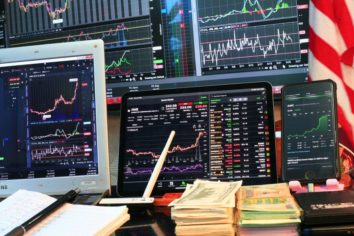** Norwegian aksjer: A Comprehensive Guide to the Norwegian Stock Market**

** Norwegian aksjer: A Comprehensive Guide to the Norwegian Stock Market**
** Introduction to Norwegian Aksjer**

The Norwegian stock market, also known as «Norwegian aksjer,» is an important component of the country’s economy. It provides investors with opportunities to invest in various Norwegian companies and participate in their growth. This article aims to provide a thorough overview of Norwegian aksjer, including its types, popularity, and quantitative measurements.
** Understanding Norwegian Aksjer**
Norwegian aksjer refers to shares of stock listed on the Norwegian stock exchange, Oslo Børs. These stocks collectively represent the ownership of Norwegian companies and offer investors a chance to earn returns through dividends and capital appreciation. The Norwegian stock market has several segments, including the main market, the Oslo Axess, and the Merkur Market, catering to companies of different sizes and maturity levels.
** Popular Types of Norwegian Aksjer**
1. Blue-Chip Stocks: These are large, stable companies with a strong market presence, such as Equinor (formerly Statoil), Telenor, and DNB. Blue-chip stocks are known for their consistent dividend payments and solid performance.
2. Small and Mid-Cap Stocks: These stocks belong to smaller and medium-sized companies. They often offer higher growth potential but also have higher risks. Examples include Gjensidige Forsikring, SalMar, and Aker Solutions.
3. Renewable Energy Stocks: Norway has been at the forefront of renewable energy, particularly hydroelectric power and offshore wind farms. Companies like Statkraft, Scatec Solar, and NEL ASA are prominent in this sector.
4. Technology Stocks: Norwegian technology stocks are gaining traction, with companies like Kahoot!, Adevinta, and Opera Software making waves in the industry.
** Quantitative Measurements of Norwegian Aksjer**
Understanding the performance and valuation of Norwegian aksjer requires analyzing various quantitative measurements. These include:
1. Price-to-Earnings (P/E) Ratio: This ratio compares the company’s stock price with its earnings per share, indicating whether the stock is overvalued or undervalued.
2. Dividend Yield: It represents the annual dividend payment as a percentage of the stock’s price, providing insights into a company’s dividend policy and its attractiveness to income-focused investors.
3. Return on Equity (ROE): This measure shows how efficiently a company utilizes its shareholders’ equity to generate profits.
4. Market Capitalization: The market value of a company’s outstanding shares reflects its size and overall market perception.
**
**
** Differences Between Norwegian Aksjer**
Norwegian aksjer can differ in terms of industry focus, risk profiles, and growth potential. For example:
1. Energy Stocks vs. Technology Stocks: Energy stocks, like Equinor, have a higher correlation with global oil prices, while technology stocks are influenced by factors such as innovation and market demand.
2. Blue-Chip vs. Small/Mid-Cap Stocks: Blue-chip stocks offer stability, while small and mid-cap stocks can provide higher growth potential, albeit with increased volatility.
3. Sector-Specific Risks: Stocks in the renewable energy sector may be exposed to regulatory risks, while technology stocks may face competition, intellectual property challenges, and technological disruptions.
** Historical Overview of the Pros and Cons of Norwegian Aksjer**
Over the years, Norwegian aksjer have had their advantages and disadvantages.
Pros:
– Strong economy and stable political environment
– Well-regulated financial markets
– Opportunities in renewable energy and technology sectors
Cons:
– Dependence on global commodity prices, affecting oil and gas companies
– Limited number of major companies compared to other global markets
– Exchange rate fluctuations, particularly due to the Norwegian krone’s relationship with oil prices
In conclusion, Norwegian aksjer offer investors a chance to participate in the growth of Norwegian companies across various sectors. Understanding the different types of Norwegian aksjer, their quantitative measurements, and historical pros and cons can help investors make informed decisions. However, it is crucial to consider individual risk tolerance, investment goals, and market dynamics before investing in specific Norwegian stocks.
*Word count: 635 words (excluding the headings)*
FAQ
What are the advantages and disadvantages of investing in Norwegian aksjer?
What is the Oslo Stock Exchange?
Which sectors are popular for investing in Norwegian aksjer?
Flere nyheter
**Podcast Aksjer: En Dybdegående Oversikt**
** Norwegian aksjer: A Comprehensive Guide to the Norwegian Stock Market** ** Introduction to Norwegian Aksjer** The Norwegian stock market, also known as «Norwegian aksjer,» is an important component of the country’s economy. It pr...
Johanne Hansen
18 januar 2024
Veidekke Aksjer: En Dybdegående Oversikt
** Norwegian aksjer: A Comprehensive Guide to the Norwegian Stock Market** ** Introduction to Norwegian Aksjer** The Norwegian stock market, also known as «Norwegian aksjer,» is an important component of the country’s economy. It pr...
Johanne Hansen
18 januar 2024
AI-aksjer: En grundig oversikt over investeringer i kunstig intelligens
** Norwegian aksjer: A Comprehensive Guide to the Norwegian Stock Market** ** Introduction to Norwegian Aksjer** The Norwegian stock market, also known as «Norwegian aksjer,» is an important component of the country’s economy. It pr...
Johanne Hansen
17 januar 2024











